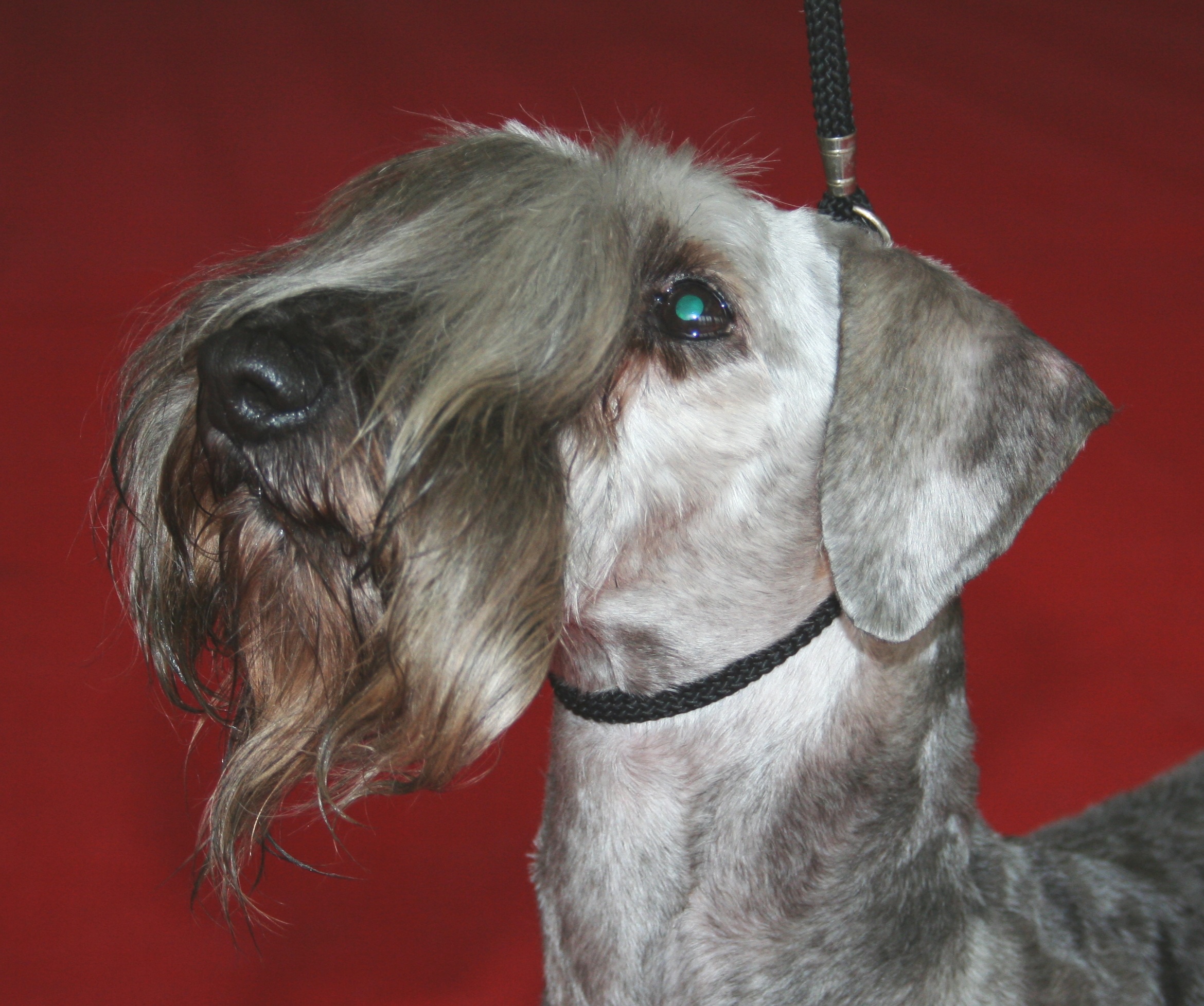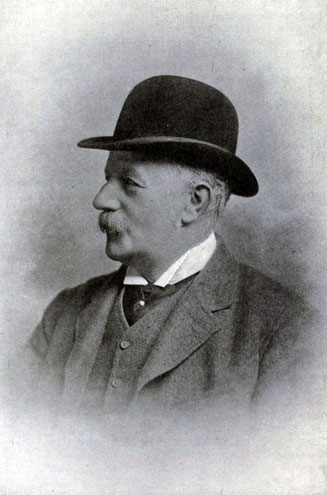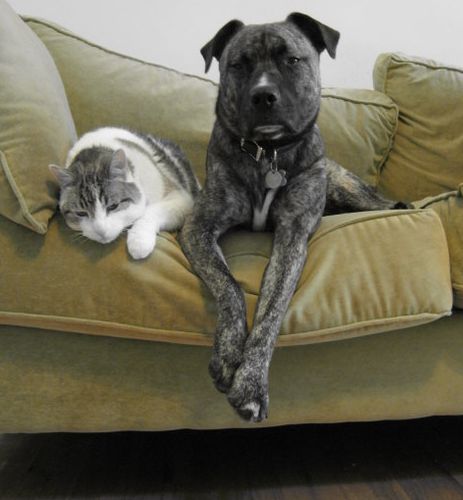|
Cesky Terrier
The Cesky Terrier ( ; cz, Český teriér, 'Bohemian Terrier' or 'Czech Terrier') is a small terrier type dog originating in Czechoslovakia. History The Cesky Terrier was created by a Czech breeder, František Horák, in 1948, as a cross between a Sealyham Terrier and a Scottish Terrier, to create a terrier suitable for hunting in the forests of Bohemia. Although not a trained scientist, Horák worked for many years as a research assistant at the Czechoslovak Academy of Sciences and used knowledge gained there in his dog breeding. Czechoslovakia was ruled by a communist regime at the time; when Horák's dogs became more popular around the world, he began to receive a large volume of mail from outside the country, which earned him the attention of the secret police. Horák died in 1997. The Cesky Terrier was recognized for international competition by the Fédération Cynologique Internationale in 1963 as breed number 246 in Group 3, Terriers. The breed is now recognized by ... [...More Info...] [...Related Items...] OR: [Wikipedia] [Google] [Baidu] |
Czech Republic
The Czech Republic, or simply Czechia, is a landlocked country in Central Europe. Historically known as Bohemia, it is bordered by Austria to the south, Germany to the west, Poland to the northeast, and Slovakia to the southeast. The Czech Republic has a hilly landscape that covers an area of with a mostly temperate continental and oceanic climate. The capital and largest city is Prague; other major cities and urban areas include Brno, Ostrava, Plzeň and Liberec. The Duchy of Bohemia was founded in the late 9th century under Great Moravia. It was formally recognized as an Imperial State of the Holy Roman Empire in 1002 and became a kingdom in 1198. Following the Battle of Mohács in 1526, the whole Crown of Bohemia was gradually integrated into the Habsburg monarchy. The Protestant Bohemian Revolt led to the Thirty Years' War. After the Battle of White Mountain, the Habsburgs consolidated their rule. With the dissolution of the Holy Empire in 1806, the Cro ... [...More Info...] [...Related Items...] OR: [Wikipedia] [Google] [Baidu] |
The Kennel Club
The Kennel Club ("KC") is the official kennel club of the United Kingdom. It is the oldest recognised kennel club in the world. Its role is to oversee various canine activities including dog shows, dog agility and working trials. It also operates the national register of pedigree dogs in the United Kingdom and acts as a lobby group on issues involving dogs in the UK. Its headquarters are on Clarges Street in Mayfair, London, with business offices in Aylesbury. The Kennel Club registration system divides dogs into seven breed groups. The Kennel Club Groups are: Hound group, Working group, Terrier group, Gundog group, Pastoral group, Utility group and Toy group. As of 2021, The Kennel Club recognised 222 breeds of dog. The Kennel Club licenses dog shows throughout the UK, but the only dog show it actually runs is Crufts. The show has been held since 1928 and attracts competitors from all over the world. It is held every March at the NEC, Birmingham, and includes the less for ... [...More Info...] [...Related Items...] OR: [Wikipedia] [Google] [Baidu] |
Terriers
Terrier (from Latin ''terra'', 'earth') is a type of dog originally bred to hunt vermin. A terrier is a dog of any one of many breeds or landraces of the terrier type, which are typically small, wiry, game, and fearless. Terrier breeds vary greatly in size from just to over 60 kg (132 lb, e.g. Black Russian Terrier) and are usually categorized by size or function. There are five different groups of terrier, with each group having different shapes and sizes. History Most terrier breeds were refined from the older purpose-bred dogs. The gameness of the early hunting terriers was exploited by using them in sporting contests. Initially, terriers competed in events such as clearing a pit of rats. The dog that was fastest in killing all the rats won. In the eighteenth century some terriers were crossed with hounds to improve their hunting, and some with fighting dog breeds to "intensify tenacity and increase courage". Some of the crosses with fighting dogs, bull and ... [...More Info...] [...Related Items...] OR: [Wikipedia] [Google] [Baidu] |
FCI Breeds
FCI may refer to: Companies and organizations * Falling Creek Ironworks, the first iron production facility in North America * Family Carers Ireland, Irish lobbying group * Federal Correctional Institution, part of the United States Bureau of Prisons * Fédération Cynologique Internationale, the World Canine Federation * Fertilizer Corporation of India, an Indian government-owned corporation * Fluid Components International, an American manufacturing company * Food Corporation of India, an Indian government-owned corporation * Francis Crick Institute, a British biomedical research centre * Fujisankei Communications International, an American media company Sports * F.C. Indiana, an American soccer team * FC Ingolstadt 04, a German football club * FCI Tallinn, an Estonian football club * Food Corporation of India F.C., an Indian football club * Italian Cycling Federation (Italian: ) Standards and measures * Facility condition index, in building management * fCi, the symbol ... [...More Info...] [...Related Items...] OR: [Wikipedia] [Google] [Baidu] |
Working Terrier
A working terrier is a small type of dog which pursues its quarry into the earth. According to the ''Oxford English Dictionary'', the name dates back to at least 1440, derived from French ''chien terrier'' 'digging dog', which is from Medieval Latin ''terrarius'', ultimately from Latin ''terra'' (earth). With the growth of popularity of fox hunting in Britain in the 18th and 19th centuries, terriers were extensively bred to follow the red fox, as well as the Eurasian badger, into its burrow, referred to as "terrier work" and "going to ground". The purpose of the terrier is to locate the quarry, then either bark and bolt it free or to a net, or trap or hold it so that it can be dug down to and killed or captured. Working terriers can be no wider than the animals they hunt (chest circumference or "span" less than 35 cm/14in), in order to fit into the burrows and still have room to manoeuver. As a result, the terriers often weigh considerably less than the fox (10 kg/22& ... [...More Info...] [...Related Items...] OR: [Wikipedia] [Google] [Baidu] |
Terrier Group
Terrier (from Latin ''terra'', 'earth') is a type of dog originally bred to hunt vermin. A terrier is a dog of any one of many breeds or landraces of the terrier type, which are typically small, wiry, game, and fearless. Terrier breeds vary greatly in size from just to over 60 kg (132 lb, e.g. Black Russian Terrier) and are usually categorized by size or function. There are five different groups of terrier, with each group having different shapes and sizes. History Most terrier breeds were refined from the older purpose-bred dogs. The gameness of the early hunting terriers was exploited by using them in sporting contests. Initially, terriers competed in events such as clearing a pit of rats. The dog that was fastest in killing all the rats won. In the eighteenth century some terriers were crossed with hounds to improve their hunting, and some with fighting dog breeds to "intensify tenacity and increase courage". Some of the crosses with fighting dogs, bull and ... [...More Info...] [...Related Items...] OR: [Wikipedia] [Google] [Baidu] |
Terrier
Terrier (from Latin ''terra'', 'earth') is a type of dog originally bred to hunt vermin. A terrier is a dog of any one of many breeds or landraces of the terrier type, which are typically small, wiry, game, and fearless. Terrier breeds vary greatly in size from just to over 60 kg (132 lb, e.g. Black Russian Terrier) and are usually categorized by size or function. There are five different groups of terrier, with each group having different shapes and sizes. History Most terrier breeds were refined from the older purpose-bred dogs. The gameness of the early hunting terriers was exploited by using them in sporting contests. Initially, terriers competed in events such as clearing a pit of rats. The dog that was fastest in killing all the rats won. In the eighteenth century some terriers were crossed with hounds to improve their hunting, and some with fighting dog breeds to "intensify tenacity and increase courage". Some of the crosses with fighting dogs, bull a ... [...More Info...] [...Related Items...] OR: [Wikipedia] [Google] [Baidu] |
List Of Dog Breeds
This list of dog breeds includes both Neontology#Extant taxa versus extinct taxa, extant and extinct dog breeds, Designer breed, varieties, landraces, and dog types. A research article on genomics, dog genomics published in Science/AAAS defines modern dog breeds as "a recent invention defined by conformation to a physical ideal and purity of lineage". Extant breeds, landraces, varieties and types Note: not all dogs listed below are recognized breeds by an official breed registry that can certify the dog is a purebred, including The Kennel Club (TKC - 1873), the oldest and first official dog breed registry in the world, located in the United Kingdom, and the three oldest breed registries in North America, and largest in the world, including the American Kennel Club (AKC - 1884), United Kennel Club (UKC - 1898), and Canadian Kennel Club (CKC - 1888). A–C D–K L–R S–Z Extinct breeds, landraces, varieties and types Notes References Citations Bib ... [...More Info...] [...Related Items...] OR: [Wikipedia] [Google] [Baidu] |
Dogs
The dog (''Canis familiaris'' or ''Canis lupus familiaris'') is a domesticated descendant of the wolf. Also called the domestic dog, it is derived from the extinct Pleistocene wolf, and the modern wolf is the dog's nearest living relative. Dogs were the first species to be domesticated by hunter-gatherers over 15,000 years ago before the development of agriculture. Due to their long association with humans, dogs have expanded to a large number of domestic individuals and gained the ability to thrive on a starch-rich diet that would be inadequate for other canids. The dog has been selectively bred over millennia for various behaviors, sensory capabilities, and physical attributes. Dog breeds vary widely in shape, size, and color. They perform many roles for humans, such as hunting, herding, pulling loads, protection, assisting police and the military, companionship, therapy, and aiding disabled people. Over the millennia, dogs became uniquely adapted to human behavior, and ... [...More Info...] [...Related Items...] OR: [Wikipedia] [Google] [Baidu] |
Ectopia Lentis
Ectopia lentis is a displacement or malposition of the eye's crystalline lens from its normal location. A partial dislocation of a lens is termed lens subluxation or subluxated lens; a complete dislocation of a lens is termed lens luxation or luxated lens. Ectopia lentis in dogs and cats Although observed in humans and cats, ectopia lentis is most commonly seen in dogs. Ciliary zonules normally hold the lens in place. Abnormal development of these zonules can lead to primary ectopia lentis, usually a bilateral condition. Luxation can also be a secondary condition, caused by trauma, cataract formation (decrease in lens diameter may stretch and break the zonules), or glaucoma (enlargement of the globe stretches the zonules). Steroid administration weakens the zonules and can lead to luxation, as well. Lens luxation in cats can occur secondary to anterior uveitis (inflammation of the inside of the eye). Anterior lens luxation With anterior lens luxation, the lens pushes into the i ... [...More Info...] [...Related Items...] OR: [Wikipedia] [Google] [Baidu] |
Coat (dog)
The coat of the domestic dog refers to the hair that covers its body. Dogs demonstrate a wide range of coat colors, patterns, textures, and lengths. As with other mammals, a dog's fur has many uses, including thermoregulation and protection from cuts or scratches; furthermore, a dog's coat plays an important role in the showing of purebred dogs. Breed standards often include a detailed description of the nature and attributes of that breed's ideal coat. A dog's coat is composed of two layers: a top coat of stiff guard hairs that help repel water and shield from dirt, and an undercoat of soft down hairs, to serve as insulation. Dogs with both under coat and top coat are said to have a ''double coat''. Dogs with a ''single coat'' have a coat composed solely of guard hairs, with little or no downy undercoat. The terms fur and hair are often used interchangeably when describing a dog's coat, however in general, a double coat, like that of the Newfoundland and most livestock g ... [...More Info...] [...Related Items...] OR: [Wikipedia] [Google] [Baidu] |
Pets
A pet, or companion animal, is an animal kept primarily for a person's company or entertainment rather than as a working animal, livestock, or a laboratory animal. Popular pets are often considered to have attractive appearances, intelligence, and relatable personalities, but some pets may be taken in on an altruistic basis (such as a stray animal) and accepted by the owner regardless of these characteristics. Two of the most popular pets are dogs and cats. Other animals commonly kept include rabbits; ferrets; pigs; rodents such as gerbils, hamsters, chinchillas, rats, mice, and guinea pigs; birds such as parrots, passerines, and fowls; reptiles such as turtles, lizards, snakes, and iguanas; aquatic pets such as fish, freshwater snails, and saltwater snails; amphibians such as frogs and salamanders; and arthropod pets such as tarantulas and hermit crabs. Small pets may be grouped together as pocket pets, while the equine and bovine group include the largest companion animals. ... [...More Info...] [...Related Items...] OR: [Wikipedia] [Google] [Baidu] |




.jpg)


